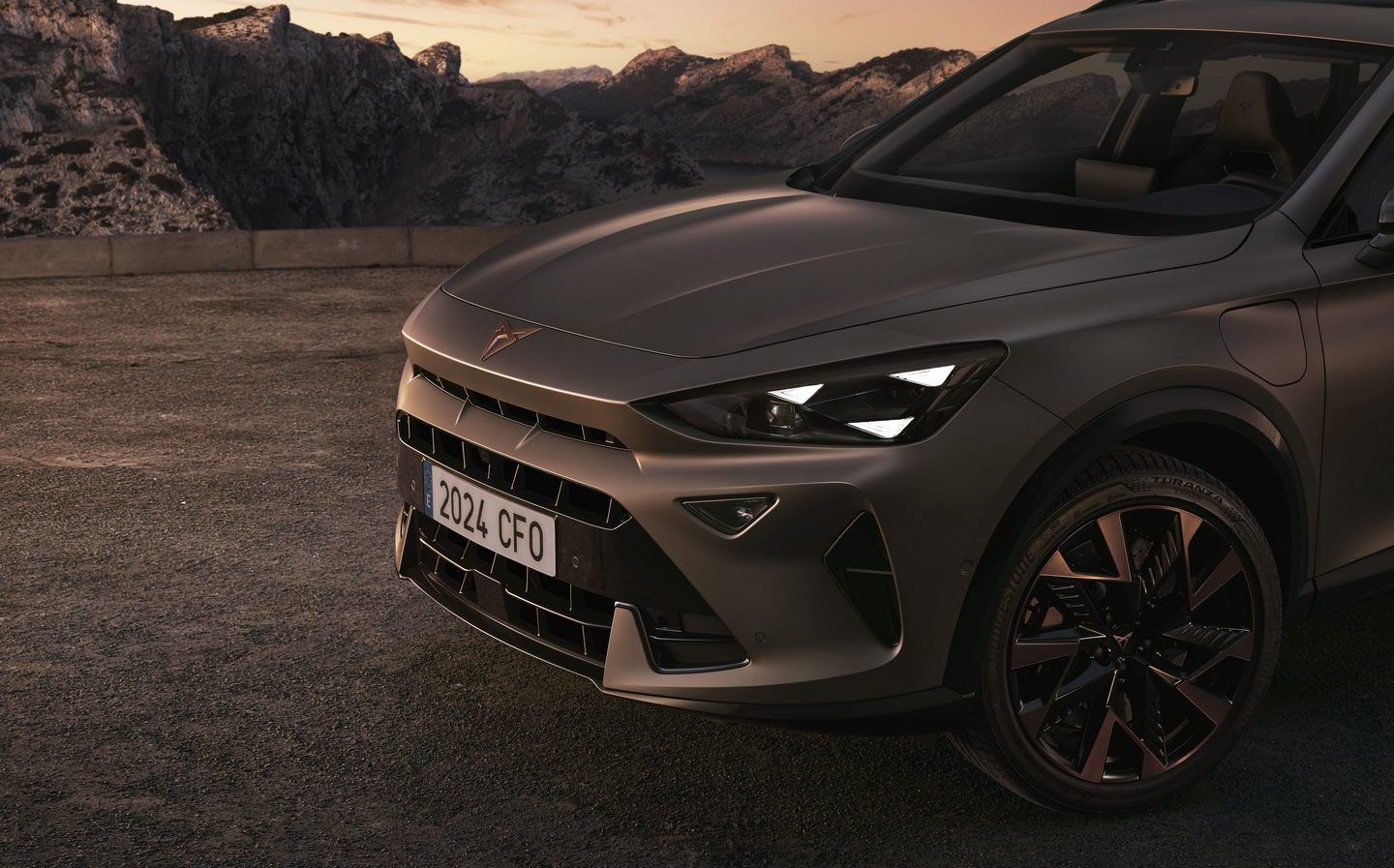Cupra updates Leon and Formentor with sharp styling and longer-range hybrids
Cupra moves further away from parent Seat
Cupra has revealed updated versions of its Leon hatchback, Leon Sportstourer estate and Formentor crossover. The makeover includes revamped interiors and improvements to the infotainment systems while a broad range of powertrains continue to be offered — with upgrades.
Cupra began as the performance division of Seat, creating fast versions of the Spanish carmaker’s mainstream models. But since it has become a separate brand, much like a maturing teenager who doesn’t want to be seen with its stuffy parents, Cupra is moving away from any association with Seat.
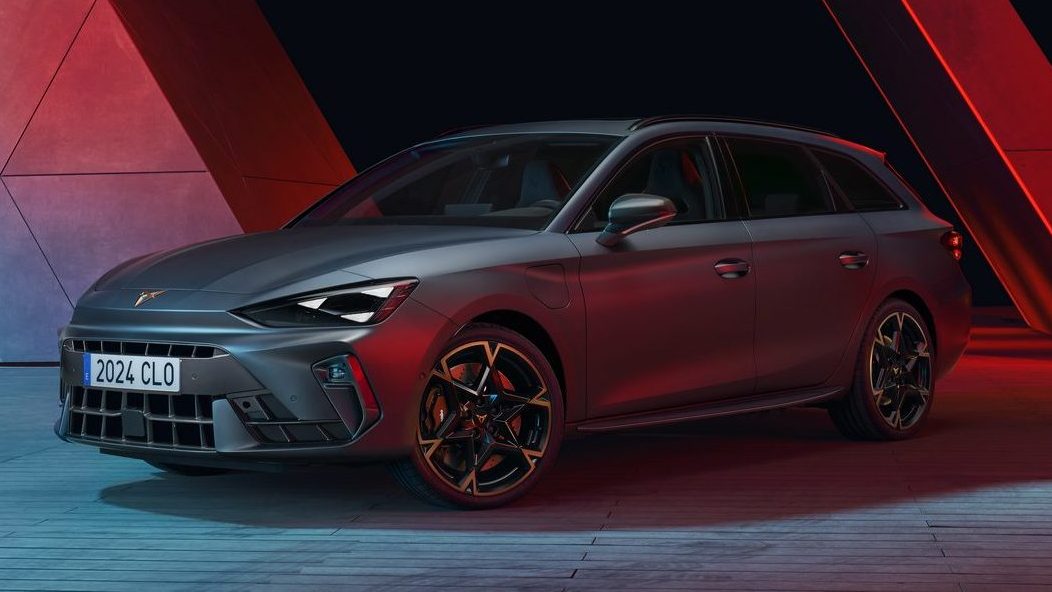
As part of today’s announcement, the five-door hatchback and estate versions of the Leon that Cupra builds receive a major styling update around the front, for even greater differentiation; so much so that Cupra now considers the Leon a standalone model.
Its so-called shark-nose front-end treatment might divide opinion but is designed to give the Cupra Leon a more aggressive look, with the badge moving up onto the bonnet, while there’s also a broader intake grille across the lower bumper section, alluding to the car’s performance potential.
New headlights carry Cupra’s lighting signature, which will appear across all new models from now, including the Tavascan electric SUV-coupé that’s due this year. The triangular LED matrix headlights are designed to make the Leon easily recognisable while also providing enhanced illumination at night, with the ability to automatically track and dip around other cars.
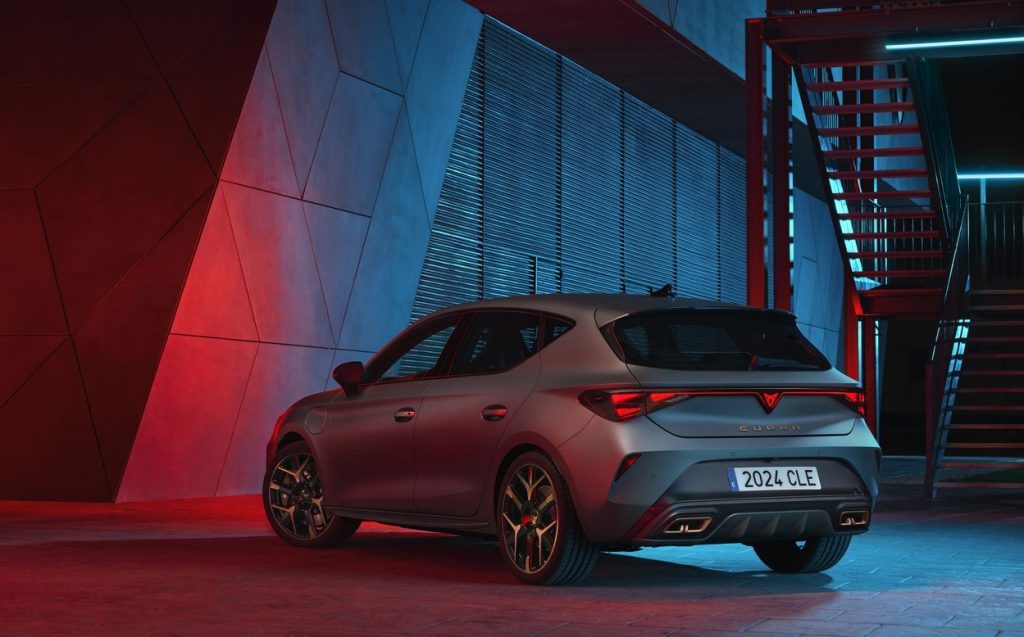
The rear lights have a similar triangular treatment and carry the Leon name on the side of the reflectors. Both rear lights are connected with a light bar and, for the first time on a Cupra, the logo is also illuminated in red on the back.
Bigger changes inside
Keen to underline its premium positioning, Cupra has overhauled the Leon’s cabin with new materials and a bump in screen real estate. In front of the driver, the digital instrument display gains a fresh look while the central touchscreen increases in size to 12.9in across the diagonal.
Following the criticism of many Volkswagen Group models in recent years, the Leon’s larger touchscreen now has an illuminated touch bar along its base, making it easier to find the volume and temperature controls at night.
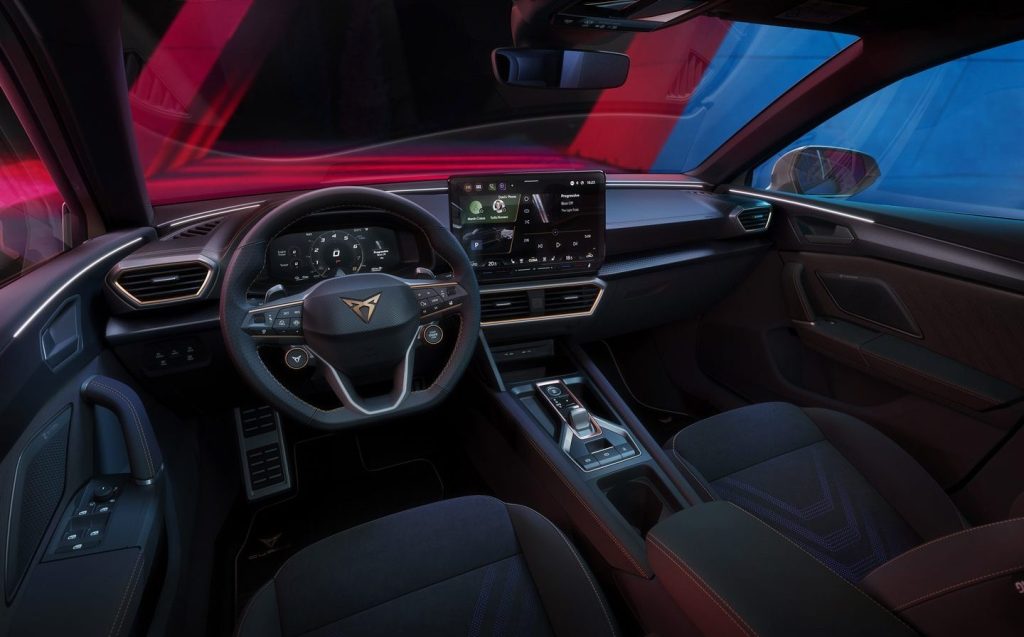
Other tweaks include a revised centre console and new upholstery options, including sports seats with microfibre material that contains 73 per cent recycled content. Cupra began introducing more sustainable and recycled materials with the electric Born hatchback through a partnership with Seaqual, a Spanish company that reclaims plastic from the sea and recycles it into new materials.
Nine exterior colours are available, including two new options: Century Bronze Matt and Enceladus Grey. These join Tiaga Grey, Magnetic Tech Matt, Magnetic Tech, Glacial White, Fiord Blue, and Midnight Black. Nine different alloy wheel designs between 18in and 19in can be ordered.
Petrol and diesel engines remain
Cupra may be adding to its electric line up of models with the Tavascan later this year, but the Leon will continue to use internal-combustion engines. The range kicks off with a 148bhp 1.5-litre four-cylinder petrol unit mated to a six-speed manual.
The Leon can also be had with a more potent 296bhp 2-litre petrol engine that drives the front wheels via a seven-speed dual-clutch automatic. This set-up uses an integrated front differential lock to enhance traction on slippery surfaces.
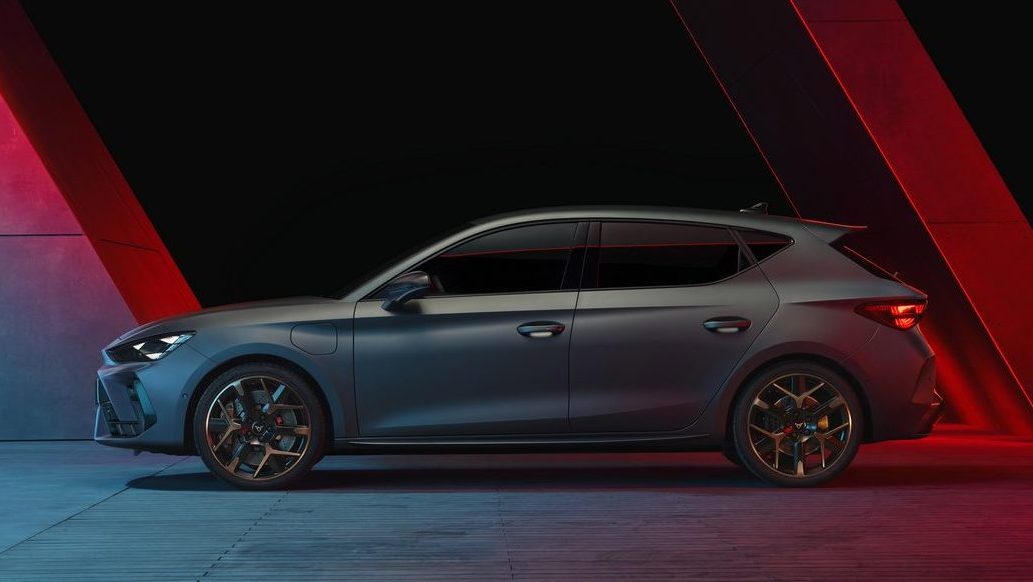
In a shift away from the traditional hot hatch format, the Leon Sportstourer is the version that gets Cupra’s most powerful engine to date, badged as the VZ — taken from veloz in Spanish, meaning speed. For this car, Cupra’s engineers have turned up the wick on the 2-litre petrol engine to 328bhp and paired it with the “4Drive” all-wheel-drive transmission.
In Cupra mode, a torque splitter can shift power between the rear wheels, as found on the Audi RS 3 and S3. An optional Akebono upgrade package for the brakes adds six-piston calipers for greater stopping power.
But Cupra needs to maintain mass appeal alongside the headline-grabbing models, so the Leon twins will also be available with more modest mild-hybrid options. These will use a 1.5-litre four-cylinder petrol engine equipped with the DSG auto and 48-volt technology. This provides engine-off coasting and a small electric power boost to the engine while contributing to a small reduction in fuel consumption and emissions.
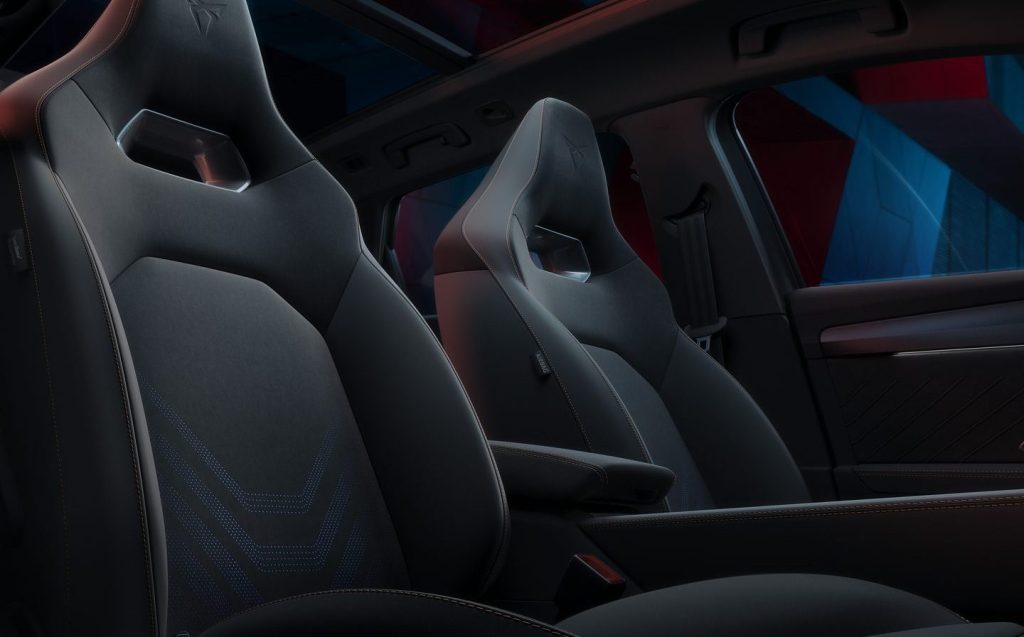
That same 1.5-litre petrol engine is at the core of the plug-in hybrid versions, which can travel much farther in electric mode thanks to a new battery with a capacity of 19.7kWh. Cupra says drivers can cover up to 62 miles before the petrol engine kicks in (it’ll be less in the real world, and even more so in cold climates), and topping up the battery is made more convenient with 11kW AC and 50kW DC charging capability.
The PHEVs come in two flavours: a 201bhp version or a more powerful 268bhp model badged as the Leon VZ e-Hybrid.
Some will be surprised to learn that Cupra will continue to offer a diesel engine in the Leon. The 2-litre TDI unit produces 148bhp and it’s paired with the seven-speed DSG automatic gearbox.
Meaner and greener
The Formentor was the first model exclusively designed for the Cupra brand, and it remains one of the best-looking crossovers in the segment. It has also proven to be a massive success for the company, finding more than 120,000 homes worldwide last year.
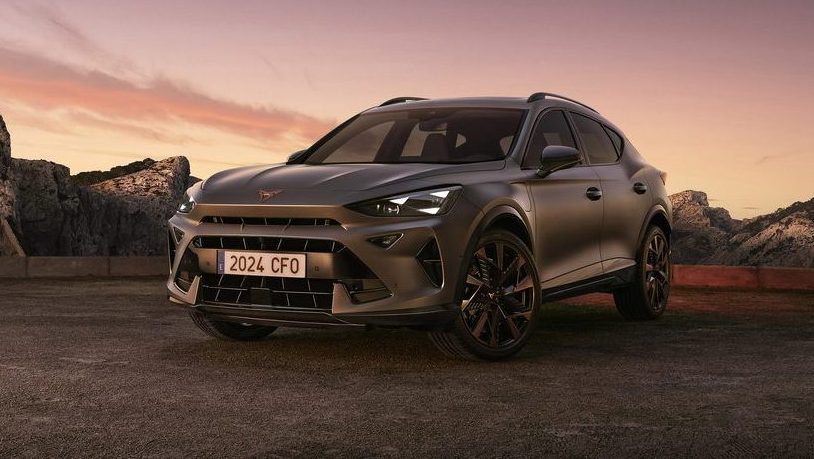
Styling changes for the Formentor mimic the Leon’s, with that shark-nose front end giving the crossover a more striking appearance. The triangular lighting design is repeated with separate fog light units and a broad lower grille, emphasising the car’s sense of width.
Similarly, at the rear, the “coast-to-coast” lights now feature an illuminated Cupra logo at the centre and carry the Formentor name on the sides of the reflectors.
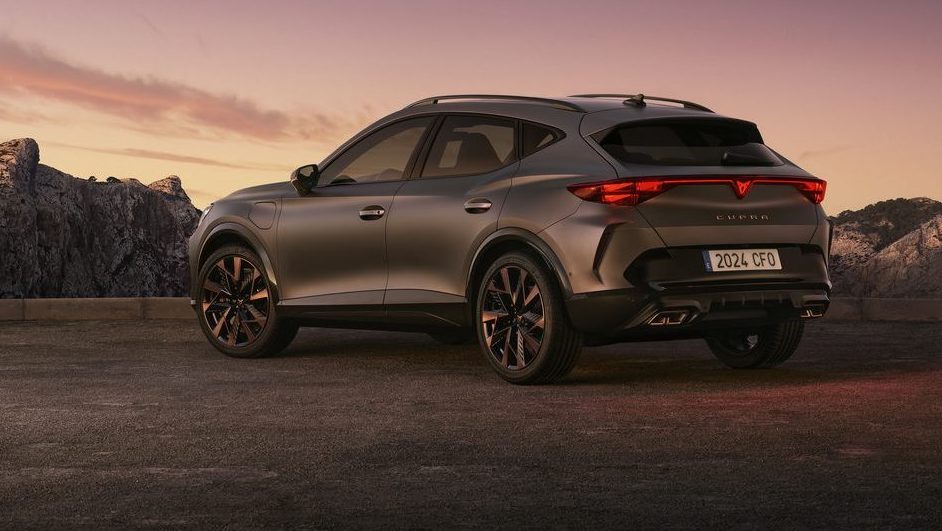
Two new colours for the Formentor are being added: Century Bronze Matt and Enceladus Grey Matt. These join the existing palette of Fiord Blue, Midnight Black, Glacial White, Magnetic Grey, Graphene Grey and Magnetic Tech Matt.
Cupra also upgrades the Formentor with the 12.9in touchscreen it fits in the Leon. The native infotainment system has been redesigned to make it easier to use and require fewer inputs to reach certain functions. Wireless Android Auto and Apple CarPlay are also available, as well as a 15W wireless charging pad that features a cooling function to ensure devices don’t overheat.
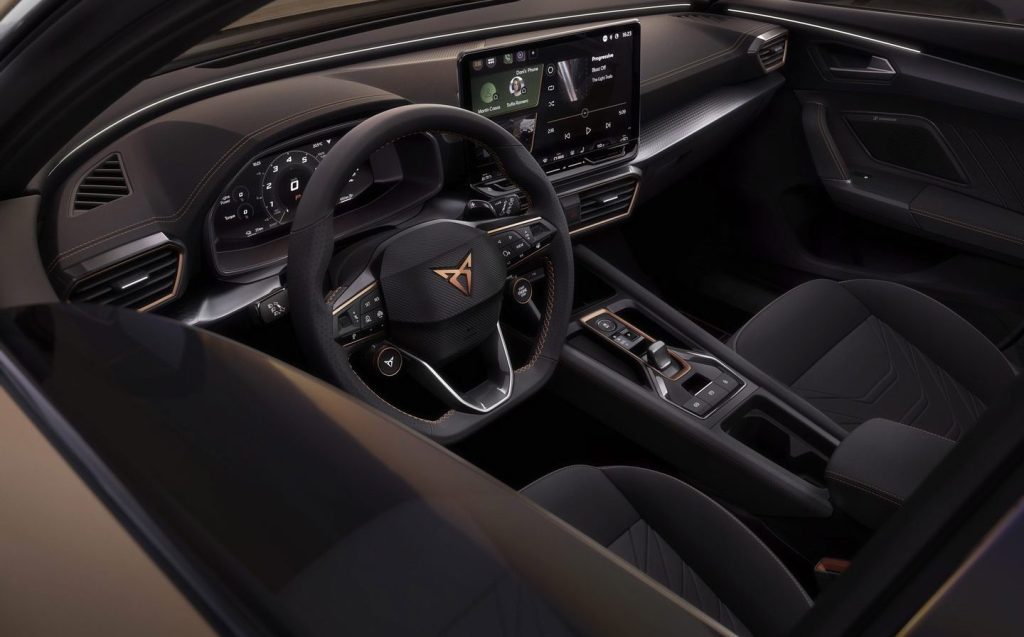
Longer range on electric power
There isn’t a pure electric option for the Formentor, but the plug-in hybrid does get a boost in its battery range, in line with that seen in the Leon. This means up to 62 miles electrically from the 19.7kWh battery before the 1.5-litre petrol engine kicks in. Again, two versions of this powertrain will be available, rated at 201bhp or 268bhp.
Lower down the line-up, a 1.5-litre eTSI mild-hybrid uses 48-volt tech for smoother engine starting and stop-start functionality in traffic, while some short periods of engine-off coasting help lower fuel consumption. If long-distance fuel economy is your thing, the Formentor is also available with a 2-litre TDI diesel with 148bhp.
Petrol power remains at the core of Cupra’s crossover, and there is a range of options available. These start with a base-level 148bhp 1.5-litre four-cylinder mated to a six-speed manual, followed by a 201bhp 2.0-litre TSI that gains a seven-speed DSG and all-wheel drive.
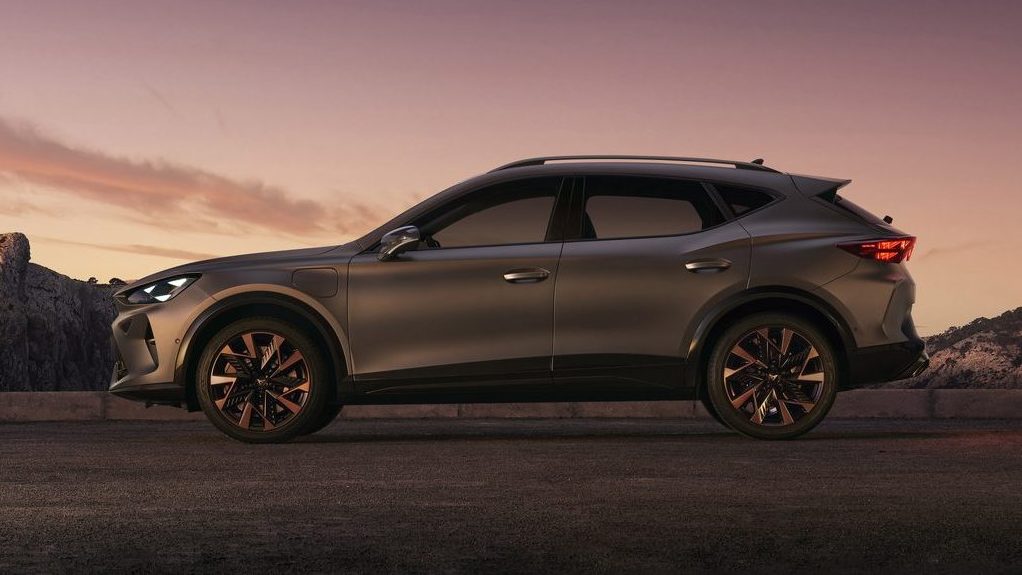
Cupra’s sportier versions of the Formentor also carry the VZ badge. The 261bhp option drives the front wheels, while the range-topping all-wheel-drive Formentor VZ gets a 328bhp output, torque splitter and optional Akebono brakes.
Cupra has yet to reveal UK pricing or specifications for the Leon or Formentor, but these are expected before the cars arrive towards the end of this year. As a guide, the outgoing models currently start at £31,565 and £32,580 respectively.
Related articles
- If you liked reading about the updated Cupra Leon and Formentor, you may like to check out our extended test of the Cupra Born EV
- Did you know that Cupra plans to launch three new models by the end of 2025?
- Will electric car prices go down in 2024?
Latest articles
- Aston Martin Valkyrie AMR-LMH hypercar hits track ahead of 2025 Le Mans challenge
- Porsche has begun testing the electric Cayenne
- Cupra Leon 272 eHybrid 2024 review: Bigger battery, better tech … but is it a Cupra?
- Porsche 911 GTS 2024 review: Hybrid heresy or more Stuttgart genius?
- Extended test: 2023 Vauxhall Astra Sports Tourer GS PHEV
- Ford Capri revival has faced a lot of flak… but are buyers put off? Here’s what visitors to the Festival of Speed had to say
- F1 2024 calendar and race reports: What time the next grand prix starts and what happened in the previous rounds
- ‘No timeframe’ for how long Volvo’s returning estate cars will be on sale in UK
- Kia Picanto 2024 review: Updates add spice to cute Korean city car


